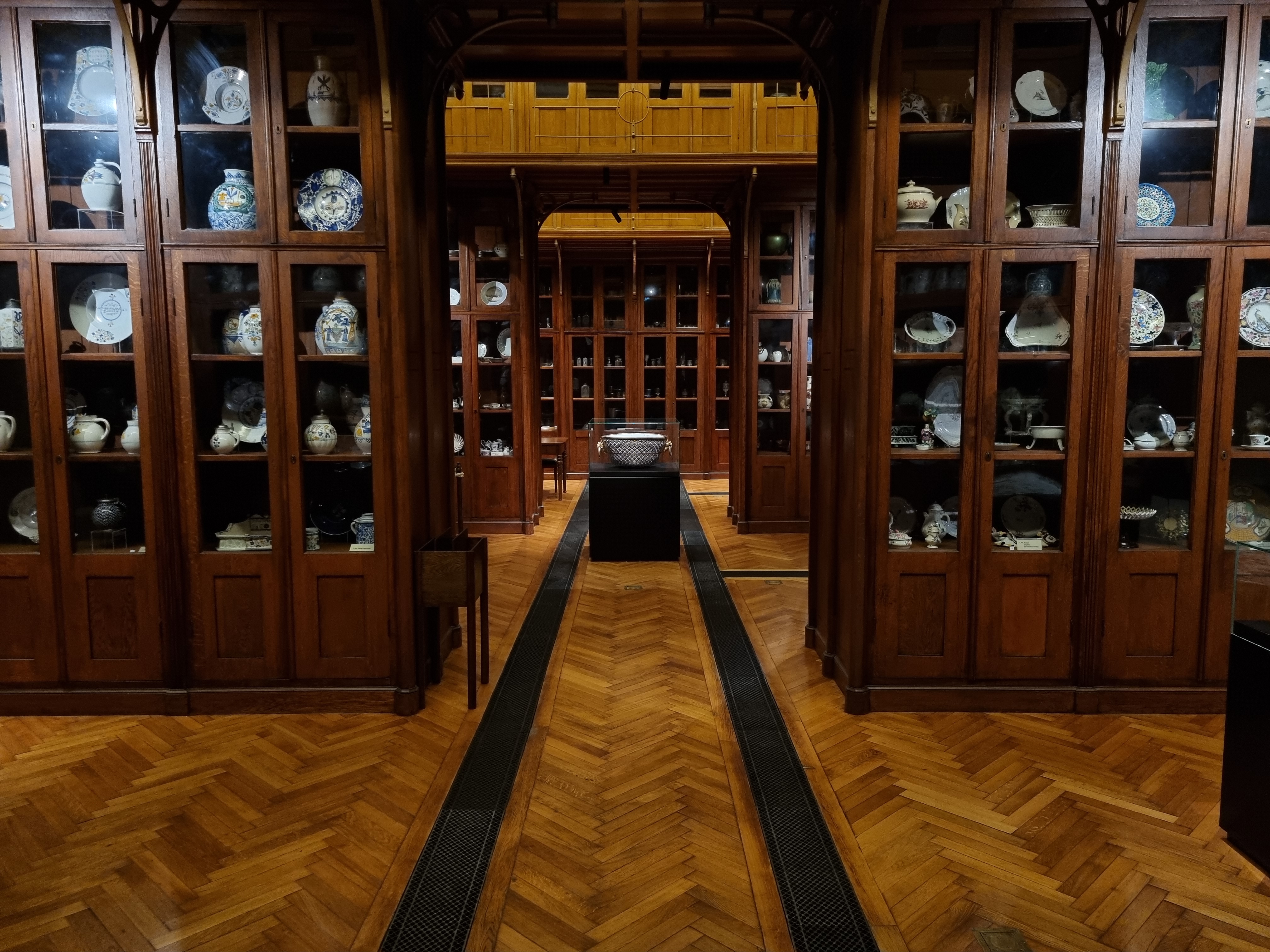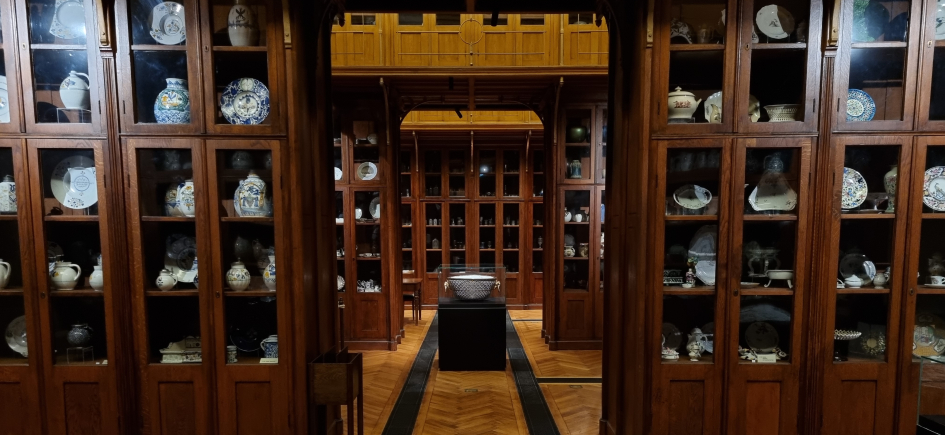
We would like to inform our esteemed visitors that from 2 December 2025, the exhibition spaces of The Coronation Mantle, The Seuso treasure – The Splendour of Roman Pannonia, the Széchényi Hall, and the Open Repository will be temporarily closed due to renovation works. The expected reopening date of the exhibitions is spring 2026.
Thank you for your understanding. We wish you a pleasant visit to our open exhibitions!
Glass, porcelain and ceramic objects of the Modern Department, as well as a smaller unit containing pharmacy jars, can be seen in the repository, which is open to the public, on the lower level. The hall bears the name of Ágoston Kubinyi, the former scholarly director of the museum (1843–1869). Its ground floor furniture was made in the 1860s at the same time as the Széchényi Hall, and the upstairs part in 1907. The drawer conversion took place already in the 21st century. Pieces representing the keepsakes of Hungarian history, social and cultural history and industrial history can be seen here. Special treasures of the collection are personal relics and depictions of famous historical personalities, politicians, artists, scientists (e.g. Prince Ferenc Rákóczi II, Lajos Kossuth, Lajos Batthyány, Ferenc Deák, Queen Elisabeth).
Interesting
- The Habsburg archduke Joseph Palatine, who had Hungarian feelings, was the main mentor of the museum. His elegant porcelain sculpture, which looks like white marble, was made in Vienna. Based on Elias Hutter's 1825 model in the 1830s.
- For the artistic development of the famous Zsolnay ceramics, the fund was created by the porcelain insulating auger. Vilmos Zsolnay was not only an excellent ceramicist, but also a great businessman. In 1888, he managed to conclude a contract for the exclusive supply of the domestic railway and the post office. The memory of this agreement is preserved by a piece of industrial historical significance, which, according to its inscription, was dedicated to "The Highness of Minister Gábor Baross M.K. for Transport as a powerful promoter of Hungarian industry"..
- The cellar case was a chest with a lid divided into compartments inside, which could accommodate six to eight columns of bottles. In the manor house, drinks were stored in in it in a good cool cellar, but it also proved to be a very practical means of transportation for valuable drinks during travels.








